Calgary is the southernmost of the two major cities of the province of Alberta; Edmonton to the north is the other one. The town is beautifully set at the confluence of the Bow River and Elbow River. The surroundings are prairie and the impressive Rocky Mountains start in the horizon to the west.
The city is one of Canada’s largest and it is one of the country’s economic centers. Tourism is also great in Calgary, which is well located for on road to and over the Rocky Mountains, which is high on many tourists’ bucket list for Canada. The mountains and the winter weather of the area also made the city host the Winter Olympics in 1988 as the first city in Canada.
Calgary is a relatively new city, but you can also experience the beginnings of the settlers’ lives exploring the hard times many of them had on the way to success. Fort Calgary and Heritage Park Historical Village are both places to get an insight and enjoy activities from the bygone era.
Modern Calgary is not least evident in the downtown business district with the city’s many high-rise buildings. You can see it all from street level on a walk down the main road, Stephen Avenue, and the whole city and its surroundings come into perspective if you take a tour up the heights of Calgary Tower.
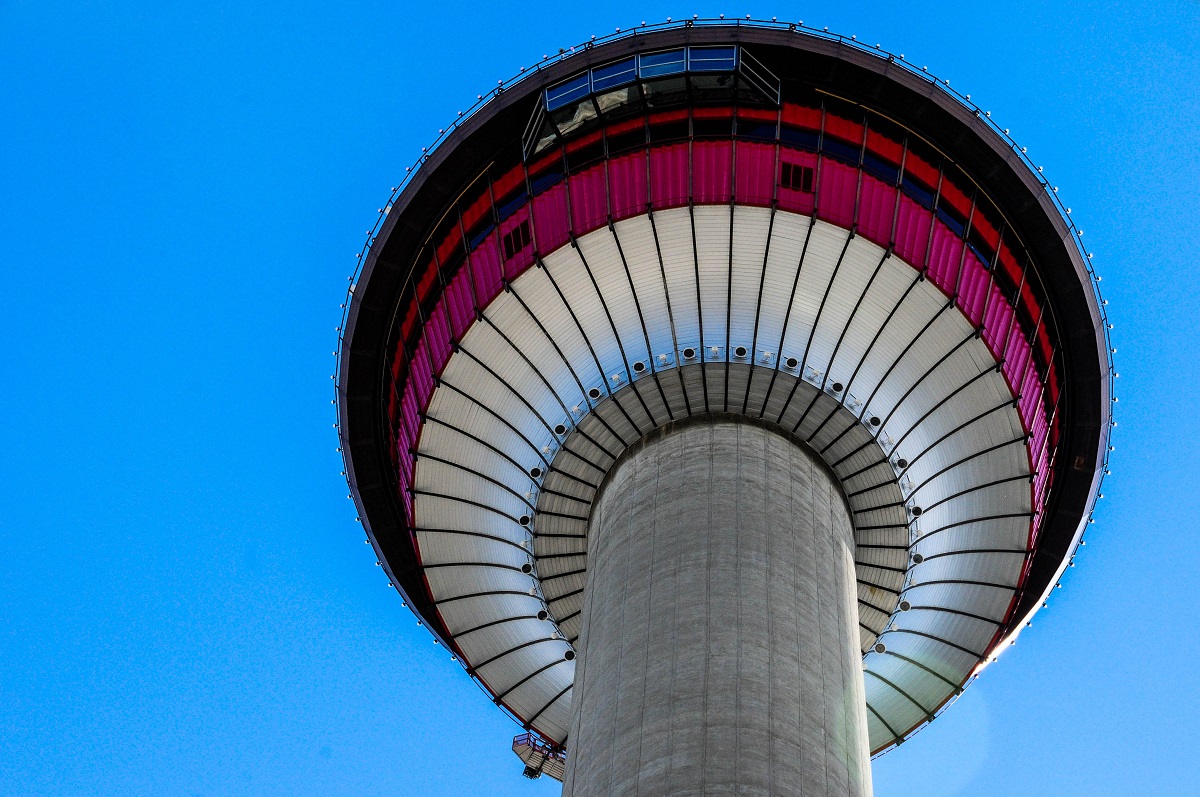
Calgary Tower is one of the landmarks in the Canadian city of Calgary. The tower is a 190.8 meter high observation tower from which there is an excellent view over Calgary and the surrounding countryside. You can also choose to look at Calgary’s streets through a glass floor and enjoy the view from the revolving restaurant at the top of the tower.
Originally named the Husky Tower, the tower was conceived as part of the 1967 celebration of the Centennial of Canadian Confederation and as a catalyst for new development in the central city. The tower opened in 1968 as the tallest building in Canada outside of Toronto.
A funny story goes that the builders Marathon Realty and Husky Oil indicated the height of the tower at 187 meters. They did this to avoid construction that would surpass the Husky Tower. Tower of the Americas opened in American San Antonio with a height of 190 meters, after which the real height of the Husky Tower was published.
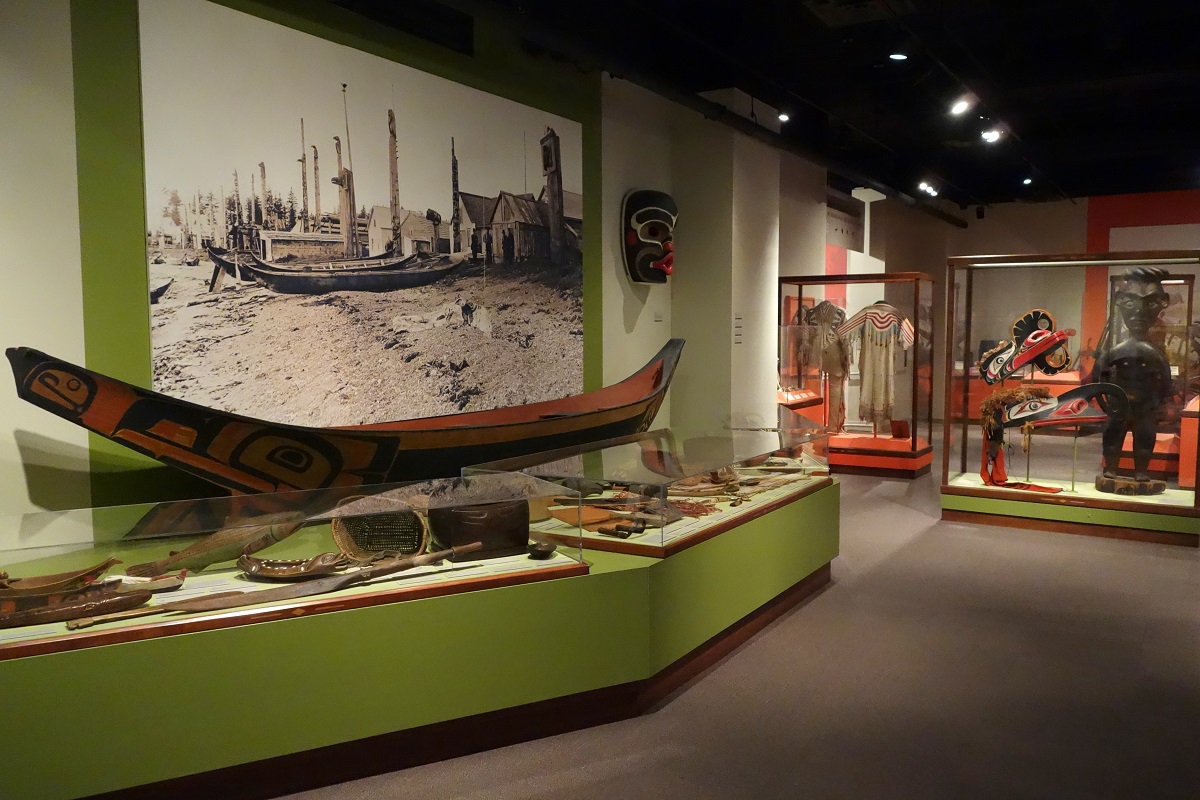
The Glenbow Museum is one of Western Canada’s largest and most significant museums. The museum is a museum of art and history, and the impressive collection briefly describes the history of western Canada through fine effects and exhibits.
The Glenbow Museum’s origins began with lawyer and businessman Eric Lafferty Harvie, who made a fortune in oil and created The Glenbow Foundation, named after Harvie’s ranch. The goal was to promote a better understanding of the history and heritage of western Canada through the collection and preservation of art, documents and historic objects.
The museum came closer to realization in 1966 after Eric Lafferty Harvie donated his collection to the people of Alberta as a gift in connection with the country’s centennial. It was later decided to construct a building for the collections as a museum, and the Glenbow Museum was then able to open in 1976.
The Glenbow Museum’s art collection includes more than 30,000 works, mainly from the 19th century to the present day. The collection includes a selection of landscape paintings, a Canadian print collection, art by Inuit and other indigenous peoples, and more. The historical exhibitions describe the development of daily life and significant events from the region over time.
Fort Calgary is where modern Calgary developed. Today it is a museum, where you get an exciting look at the history of the area’s settlements and the lives of the settlers. In the area you can see some rebuilt buildings from the fort’s active time, so they also give a good impression of life here.
The fort was built in 1875 and named Fort Brisebois after the site’s first commander. The following year it was named Fort Calgary. The military outpost was established as part of the North-West Mounted Police’s efforts to curb American rum and whiskey smugglers in the region and to establish relations with the indigenous peoples of the area.
The fort was expanded in 1882 when it gained a higher status within the North-West Mounted Police, who used the fort until 1914. The site was then sold to the Grand Trunk Pacific Railway, who demolished the complex to build a railway station here. In the 1970s, archaeological excavations were carried out to determine the exact location of Fort Calgary, which gave the museum its start.
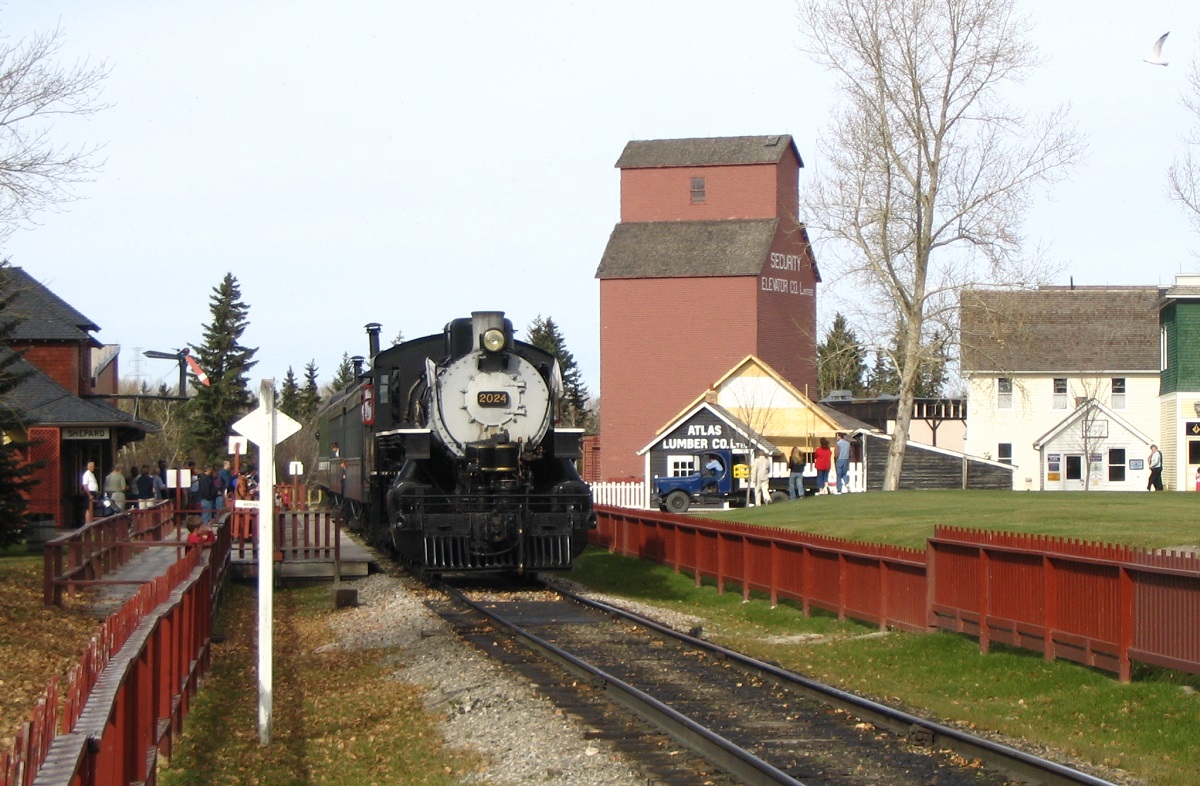
Heritage Park Historical Village is an interesting cultural history park, where a visit is like stepping back in time when settlers, steam locomotives and authentic prairie towns were commonplace in Alberta and the rest of western Canada.
The park serves as one of Canada’s largest living history open-air museums and is one of Calgary’s most visited tourist attractions. The exhibits span Western Canadian history from the 1860s to the 1950s. Many of the buildings are historic and were transported to the park to be displayed.
You can also see reconstructions of actual buildings in the park, and most of the houses are furnished with period furnishings, and you can see historical costumes, old cars and horse-drawn vehicles as part of the experience in the exciting park.
The Heritage Park Historical Village is divided into four areas that reflect different time periods in Western Canadian history. One can visit the Hudson’s Bay Company Fur Trading Fort from about 1864, the first settlement village from about 1880, the railroad’s prairie town from about 1910 and the Heritage Plaza depicting the 1920s to 1950s.
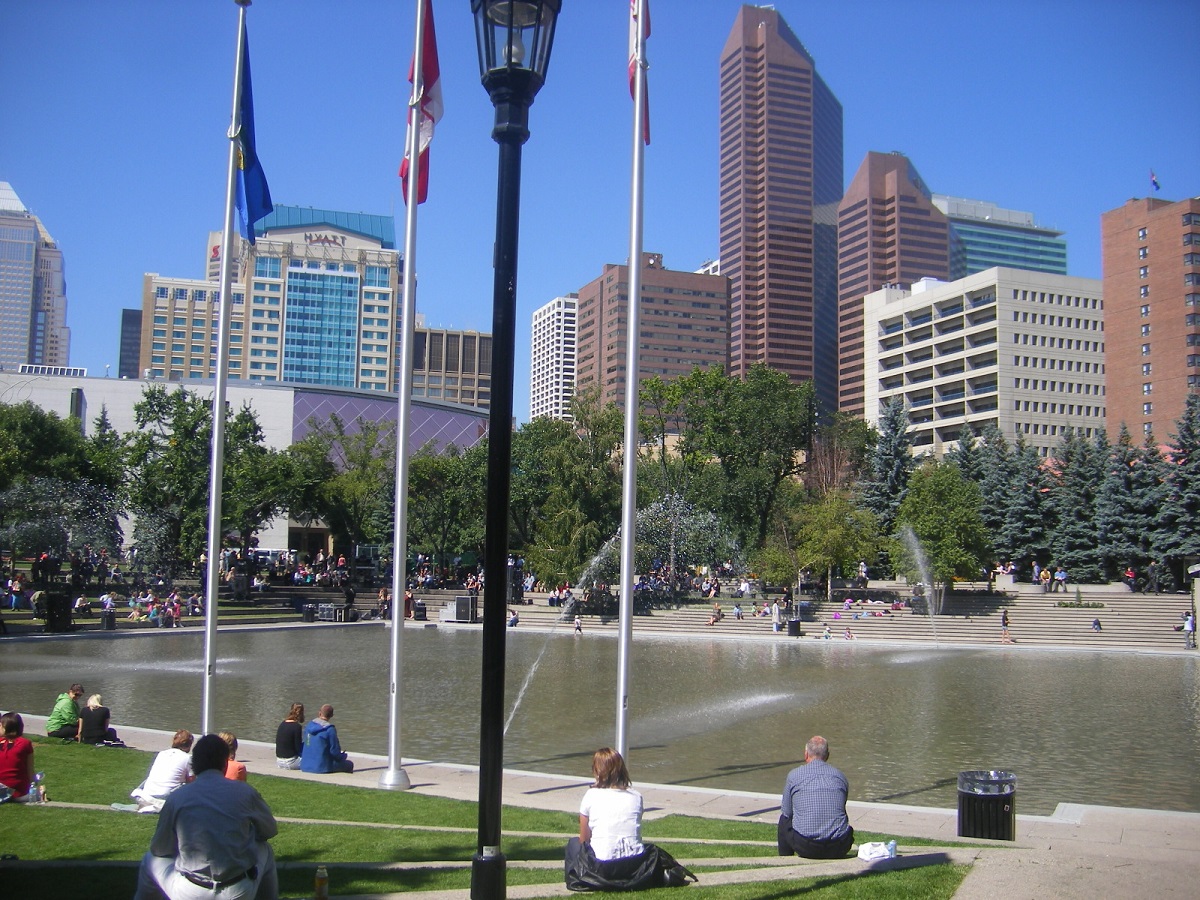
Olympic Plaza is a plaza in Calgary that offers a relaxing environment in an architectural setting that reflects both modern and historic Calgary. It is a beautiful and popular urban space with various activities.
Olympic Plaza was established as an urban space in connection with the Olympic Winter Games in Calgary in 1988, where the square was to be used for medal presentations during the Games. Today there are, among other things, concerts and festivals on the square, where you can go ice-skating in the winter.
The Chinese Cultural Center is a Chinese cultural center in Calgary’s Chinatown. In the district there is a wonderful and exotic Chinese atmosphere, which is worth experiencing. In the Chinese Cultural Centre, the focus is on Chinese culture and history in Canada.
The central part of the center is Dr. Henry Fok Cultural Hall, which is a building modeled after the Temple of Heaven in Beijing. This is clearly seen in the architecture and decoration with, among other things, dragons and phoenixes. There are four columns with gold ornamentation, each representing a different season, and the blue-tiled roof was built in traditional Chinese layered fashion.
At the center you can visit the Chinese Artifacts Museum, whose exhibits include the history of Chinese immigration to Canada and the history of the Chinese community in Calgary. There are also various typical Chinese objects in the site’s collection.
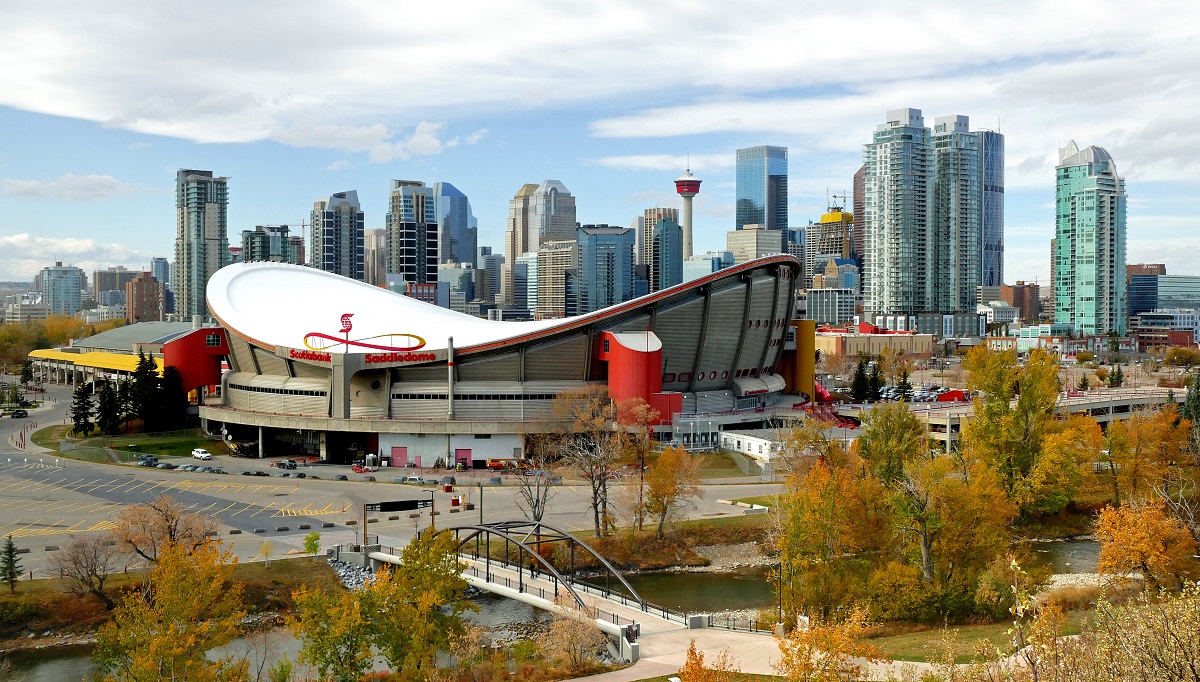
The Saddledome is the name of a sports hall that stands as one of Calgary’s most distinctive buildings. As the name suggests, the Saddledome has an architectural saddle shape that was designed with inspiration in the city and region’s traditional rodeos and use of horses.
The Saddledome is home to the city’s NHL ice hockey team, the Calgary Flames, and is also used for rodeos and many events. The hall was built in 1983 as a replacement for an earlier hall, and it was the Olympic arena in 1988, when the Olympic competitions in ice hockey and figure skating were held here.
The Southern Alberta Jubilee Auditorium is the southern twin of the two cultural buildings that were built in 1955 to mark the 50th anniversary of the establishment of the province of Alberta. The northern twin is located in the city of Edmonton.
The large building is the stage and home of the Calgary Opera and Alberta Ballet, and there are ongoing performances and productions here. A number of other events such as stand-up and touring plays are also organized here.
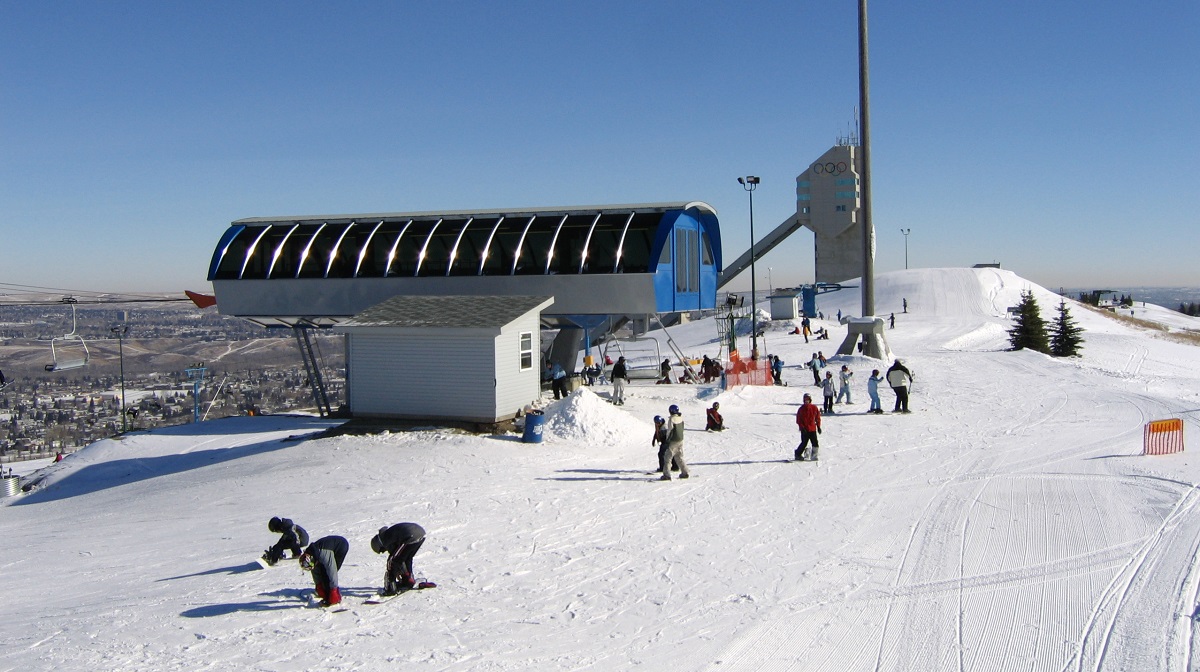
Canada Olympic Park is Calgary’s Olympic park, which offers a wealth of activities both summer and winter. The park was the place where the 15th Olympic Winter Games were held in 1988, so the starting point is naturally enough sports.
In Canada Olympic Park there is a large selection of activities throughout the year. There are thus disciplines such as skiing, snowboarding and bobsledding in the winter, while in the summer you can play beach volleyball and mini golf and also go bobsledding.
Calgary City Hall is the name of Calgary’s town hall, which stands in the city’s streetscape as one of the beautiful buildings from the early 1900s. The town hall opened in stately style in 1911 next to the site where a wooden town hall building had stood until then.
The first town hall had been built on a donated piece of land in 1885, but it soon became apparent that the growth of the town meant that a new and larger town hall had to be built. Calgary City Hall was built in neo-Romanesque style from 1907 to the design of architect William M. Dodd.
The new and larger City Hall worked as intended in terms of size, but over time it also became too small for the growing administration in Calgary. Therefore, the Calgary Municipal Building was opened in modern architecture in 1985 as a colossal expansion in relation to Calgary City Hall.
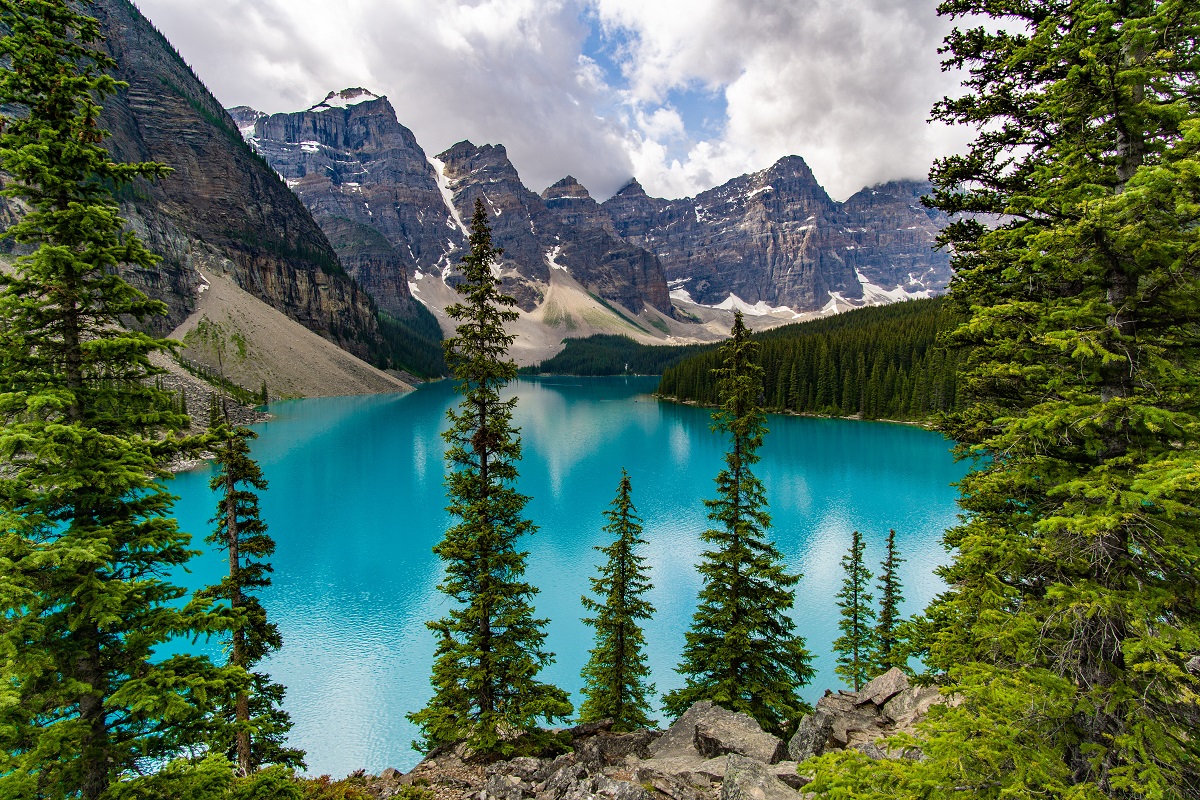
Banff National Park is a national park that was established in 1885, making it Canada’s oldest. It is located along the old railway line between Calgary and Vancouver, and the 6,641 km² park is an easily accessible with entrances from Calgary in the east, from Rocky Mountain House in the northeast, from Jasper National Park in the north, and from two roads in the west from, for example, Vancouver and Kamloops.
In the early years, the Canadian Pacific Railway was crucial to the development of the tourism into the national park. The railway company built the Banff Springs Hotel and Château Lake Louise and attracted tourists to the luxurious hotels in the stunningly beautiful surroundings. In the early 1900s, roads were built in the park, and access became easier for many over the years.
Read more about Banff National Park
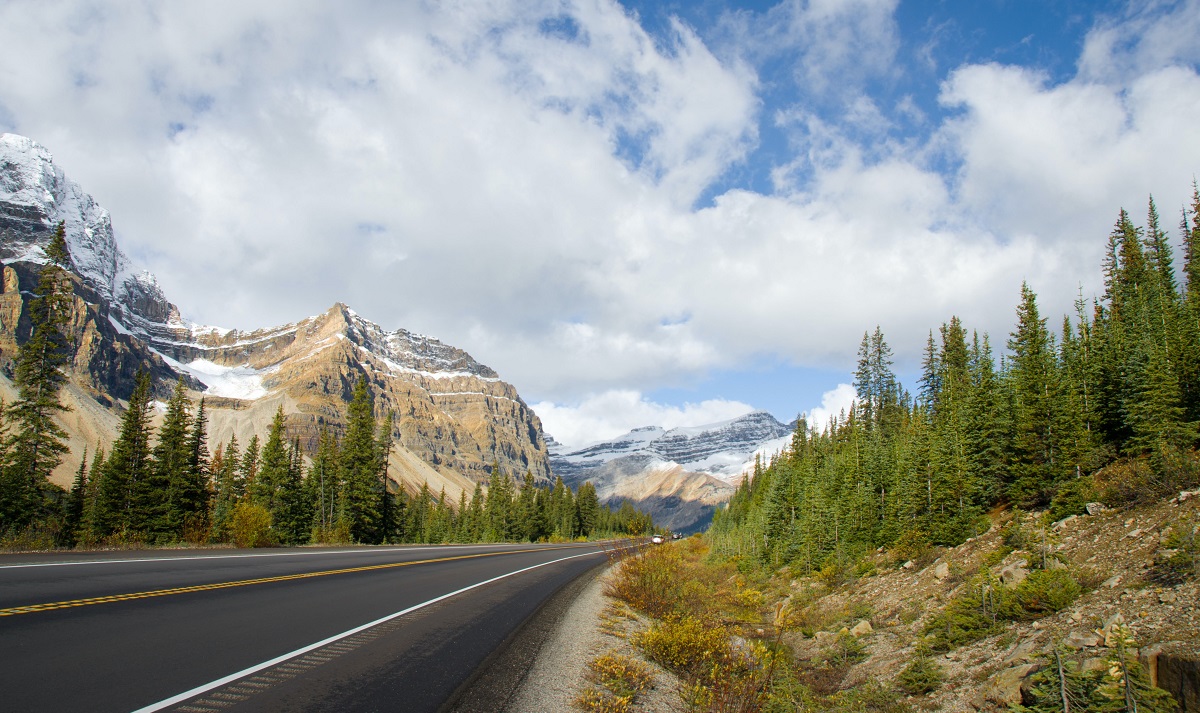
Icefields Parkway is the name of the road that connects the town of Jasper in the north with Lake Louise in the south. The road is used by countless tourists every summer who are on a road trip to experience the beautiful Canadian Rocky Mountains. The Icefields Parkway is 233 kilometers long and it connects Jasper National Park and Banff National Park.
If you drive south from Jasper, there are many places of interest on the way to Banff, and you can stop at several viewpoints and parking options at hiking trails to beautiful places in nature. Athabasca Falls and Sunwapta Falls are good spots on the northern part of the road. Athabasca Falls is 24 meters high, 46 meters wide and with large volumes of water pouring over the edge. Sunwapta Falls is similarly impressive and has a drop of 18.5 meters.
If you drive further south, you come to the Icefields Centre, where you can see the Athabasca Glacier, which is one of six glacier fronts from the Columbia Icefield. The glacier has retreated considerably over the past hundred years, but you can still see it and walk to it on the interesting hiking trail that has been established here.
After the Icefields Centre, you cross the border between Jasper National Park and Banff National Park when you drive further south. Here you come to a stop where there is a short hiking route to Mistaya Canyon, which is a nice walk through the forest to a beautiful gorge.
The next major natural attractions are the beautiful lakes Peyto Lake and Bow Lake with crystal clear water and views of majestic mountains. You can enjoy the scenery and the view from the viewpoints along the Icefields Parkway or take a walk in the area along the northern shore of Bow Lake. The hiking trail goes all the way to Bow Glacier Falls.
The beautiful lakes continue along the Icefields Parkway to the south with first Hector Lake and Herbert Lake before reaching the town and Lake Louise. The lake is perhaps the most famous in Canada’s Rocky Mountains, and it is here that you find the luxury hotel Fairmont Château Lake Louise. From Lake Louise, you can continue to Moraine Lake south of the city, which complements Lake Louise in the most beautiful way, or drive on to the town of Banff to the southeast.
The Royal Tyrrell Museum is a paleontological museum located in the town of Drumheller in the province of Alberta. The museum is named after the geologist Joseph Burr Tyrrell, who, among other things, found dinosaur bones in Alberta in 1884. The initiative for the museum was taken in 1981, and it opened in 1985.
The museum’s collection includes over 160,000 fossils with over 350 holotypes, giving the Royal Tyrrell Museum the largest collection of fossils in Canada. The museum naturally only shows a small part of the collection in the exhibitions. Preserved parts of a mammoth and Dinosaur Hall are among the highlights.
The museum is located on the North Dinosaur Trail in Drumheller. The site is well chosen because the site is located in the middle of the fossil-bearing layers of the Horseshoe Canyon Formation. Here you can take a walk along the Badlands Interpretive Trail, which is a 1.4 kilometer long hiking trail northeast of the museum building.
Dinosaur Provincial Park is an area in the Canadian province of Alberta, which lies east of the city of Calgary. It is an area with so-called Badlands, which is a nature type that occurs in dry climates, where softer sedimentary rocks and clays have been eroded by wind and water. It produces canyons and other geological formations.
In Dinosaur Provincial Park, remains of over 50 different dinosaurs have been found, and it is the area in the world where the most fossils have been found, from everything from the large prehistoric animals to microscopic spores. This richness led Dinosaur Provincial Park to be listed as a UNESCO World Heritage Site in 1979.
You can start a visit in the Dinosaur Provincial Park Visitor Center, which offers exhibitions about dinosaurs and fossils, and you get a good impression of the park’s geology and natural history. From here you can drive on a short circuit, where you can also walk off some hiking trails. You can also see John Ware’s Cabin, which is a recreated log cabin from the early 1900s.

Edmonton is the capital of the province of Alberta, and it is the northernmost city with more than a million inhabitants in North America. Edmonton, with its location, is called the gateway to the north because the city is the starting point for major raw material projects in northern Alberta and the Northwest Territories.
Edmonton is the cultural and economic center of northern Alberta, and there are many activities to come for. Downtown Edmonton is characterized by high-rise buildings that make the city skyline as you approach the metropolitan area. In addition to the many modern office buildings, there are numerous heritage sights and monuments from the city’s history.
6455 Macleod Trail SW
chinookcentre.com
901 64 th Avenue NE
deerfootmall.shopping.ca
2nd Avenie & 2nd Street SW
eauclairemarket.com
100 Anderson Road SE
southcentre.shopping.ca
2525 36 th Street NE
sunridgemall.shopping.ca
Stephen Avenue, 8 th Street, 11 th Street SW, 17 th Avenue, Chinatown, Penny Lane
Calgary Zoo
210 St. George’s Drive NE
calgaryzoo.com
Calaway Park Amusement Park
245033 Range Road 33
calawaypark.com
Spark
210 Saint George’s Drive NE
sparkscience.ca
Spaceport
Calgary International Airport
yyc.com/spaceport
The Hangar Flight Museum
4629 McCall Way NE
thehangarmuseum.ca
Like many other places on the Canadian prairie, there had been housing for millennia before the first European arrived. It was the cartographer David Thompson who, in 1787, lived over the winter with some of the indigenous Peigan tribe.
However, it was almost 100 years before the first settlement took place, it was the Irishman John Glenn who, along with his wife, searched for a place to settle. As they came through present-day Calgary, they saw the lush and virgin soil, and that was the result of their choice.
Shortly thereafter, a manned entry by the prepared police, the North West Mounted Police (the current Royal Canadian Mounted Police), named Fort Brisebois, was established. Brisebois was an officer in the prepared police, and when he fell into disrepute, the fort was renamed Fort Calgary in 1876. The name derives from an area of the Scottish island, the Isle of Mull.
In 1883, the railroad came to town – the station was located on the stretch to Vancouver and the Canadian Pacific coast. It brought growth to the city, which in 1884 officially became a city – the first in the Northwest Territories of that time.
Calgary’s great economic and population growth was linked to the oil discoveries made in the province of Alberta. The extraction first started in 1847, and although northern Edmonton was the center of the oil industry, Calgary was also favored over decades by the area’s solid economy. The oil produced uninterrupted growth until the 1980s, when oil prices dropped drastically and it slowed Calgary’s development until the late 1990s.
However, there were bright spots in the late 1980s financial situation, and the biggest of them all was the holding of the 15th Winter Olympics in Calgary in 1988. It was an event that cemented the city’s name and existence worldwide.
Over the past ten years, the economic downturn has turned to prosperity, and Calgary is one of the largest growth areas in Canada. The population has grown to one million and to about 1.1 million in the urban area. The oil and gas industry is still a significant part of the city’s economic foundation, but new industries have emerged, not least tourism, where Calgary itself and the surrounding nature parks attract millions of annual visitors.

Overview of Calgary
Calgary is the southernmost of the two major cities of the province of Alberta; Edmonton to the north is the other one. The town is beautifully set at the confluence of the Bow River and Elbow River. The surroundings are prairie and the impressive Rocky Mountains start in the horizon to the west.
The city is one of Canada’s largest and it is one of the country’s economic centers. Tourism is also great in the city, which is well located for on road to and over the Rocky Mountains, which is high on many tourists’ bucket list for Canada. The mountains and the winter weather of the area also made the city host the Winter Olympics in 1988 as the first city in Canada.
About the upcoming Calgary travel guide
About the travel guide
The Calgary travel guide gives you an overview of the sights and activities of the Canadian city. Read about top sights and other sights, and get a tour guide with tour suggestions and detailed descriptions of all the city’s most important churches, monuments, mansions, museums, etc.
Calgary is waiting for you, and at vamados.com you can also find cheap flights and great deals on hotels for your trip. You just select your travel dates and then you get flight and accommodation suggestions in and around the city.
Read more about Calgary and Canada
Buy the travel guide
Click the “Add to Cart” button to purchase the travel guide. After that you will come to the payment, where you enter the purchase and payment information. Upon payment of the travel guide, you will immediately receive a receipt with a link to download your purchase. You can download the travel guide immediately or use the download link in the email later.
Use the travel guide
When you buy the travel guide to Calgary you get the book online so you can have it on your phone, tablet or computer – and of course you can choose to print it. Use the maps and tour suggestions and you will have a good and content-rich journey.
Calgary Tower • Olympic Plaza • Great Plains • Majestic Mountains

Overview of Calgary
Calgary is the southernmost of the two major cities of the province of Alberta; Edmonton to the north is the other one. The town is beautifully set at the confluence of the Bow River and Elbow River. The surroundings are prairie and the impressive Rocky Mountains start in the horizon to the west.
The city is one of Canada’s largest and it is one of the country’s economic centers. Tourism is also great in the city, which is well located for on road to and over the Rocky Mountains, which is high on many tourists’ bucket list for Canada. The mountains and the winter weather of the area also made the city host the Winter Olympics in 1988 as the first city in Canada.
About the upcoming Calgary travel guide
About the travel guide
The Calgary travel guide gives you an overview of the sights and activities of the Canadian city. Read about top sights and other sights, and get a tour guide with tour suggestions and detailed descriptions of all the city’s most important churches, monuments, mansions, museums, etc.
Calgary is waiting for you, and at vamados.com you can also find cheap flights and great deals on hotels for your trip. You just select your travel dates and then you get flight and accommodation suggestions in and around the city.
Read more about Calgary and Canada
Buy the travel guide
Click the “Add to Cart” button to purchase the travel guide. After that you will come to the payment, where you enter the purchase and payment information. Upon payment of the travel guide, you will immediately receive a receipt with a link to download your purchase. You can download the travel guide immediately or use the download link in the email later.
Use the travel guide
When you buy the travel guide to Calgary you get the book online so you can have it on your phone, tablet or computer – and of course you can choose to print it. Use the maps and tour suggestions and you will have a good and content-rich journey.

Olympic Plaza is a plaza in Calgary that offers a relaxing environment in an architectural setting that reflects both modern and historic Calgary. It is a beautiful and popular urban space with various activities.
Olympic Plaza was established as an urban space in connection with the Olympic Winter Games in Calgary in 1988, where the square was to be used for medal presentations during the Games. Today there are, among other things, concerts and festivals on the square, where you can go ice-skating in the winter.
The Chinese Cultural Center is a Chinese cultural center in Calgary’s Chinatown. In the district there is a wonderful and exotic Chinese atmosphere, which is worth experiencing. In the Chinese Cultural Centre, the focus is on Chinese culture and history in Canada.
The central part of the center is Dr. Henry Fok Cultural Hall, which is a building modeled after the Temple of Heaven in Beijing. This is clearly seen in the architecture and decoration with, among other things, dragons and phoenixes. There are four columns with gold ornamentation, each representing a different season, and the blue-tiled roof was built in traditional Chinese layered fashion.
At the center you can visit the Chinese Artifacts Museum, whose exhibits include the history of Chinese immigration to Canada and the history of the Chinese community in Calgary. There are also various typical Chinese objects in the site’s collection.

The Saddledome is the name of a sports hall that stands as one of Calgary’s most distinctive buildings. As the name suggests, the Saddledome has an architectural saddle shape that was designed with inspiration in the city and region’s traditional rodeos and use of horses.
The Saddledome is home to the city’s NHL ice hockey team, the Calgary Flames, and is also used for rodeos and many events. The hall was built in 1983 as a replacement for an earlier hall, and it was the Olympic arena in 1988, when the Olympic competitions in ice hockey and figure skating were held here.
The Southern Alberta Jubilee Auditorium is the southern twin of the two cultural buildings that were built in 1955 to mark the 50th anniversary of the establishment of the province of Alberta. The northern twin is located in the city of Edmonton.
The large building is the stage and home of the Calgary Opera and Alberta Ballet, and there are ongoing performances and productions here. A number of other events such as stand-up and touring plays are also organized here.

Canada Olympic Park is Calgary’s Olympic park, which offers a wealth of activities both summer and winter. The park was the place where the 15th Olympic Winter Games were held in 1988, so the starting point is naturally enough sports.
In Canada Olympic Park there is a large selection of activities throughout the year. There are thus disciplines such as skiing, snowboarding and bobsledding in the winter, while in the summer you can play beach volleyball and mini golf and also go bobsledding.
Calgary City Hall is the name of Calgary’s town hall, which stands in the city’s streetscape as one of the beautiful buildings from the early 1900s. The town hall opened in stately style in 1911 next to the site where a wooden town hall building had stood until then.
The first town hall had been built on a donated piece of land in 1885, but it soon became apparent that the growth of the town meant that a new and larger town hall had to be built. Calgary City Hall was built in neo-Romanesque style from 1907 to the design of architect William M. Dodd.
The new and larger City Hall worked as intended in terms of size, but over time it also became too small for the growing administration in Calgary. Therefore, the Calgary Municipal Building was opened in modern architecture in 1985 as a colossal expansion in relation to Calgary City Hall.
Similar to Calgary Travel Guide